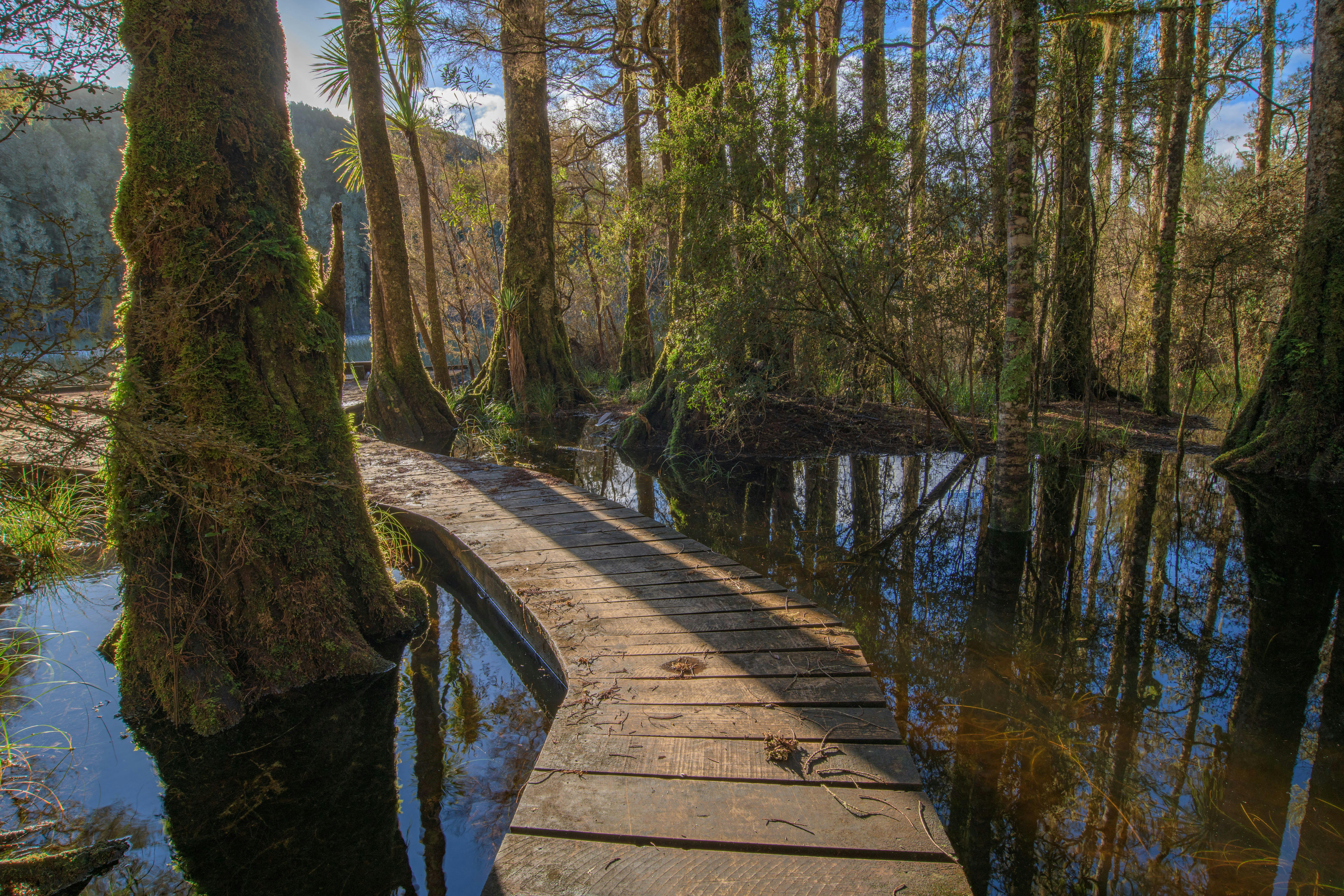A wall of kahikatea trees reflected in an ephemeral lagoon makes Arohaki an enchanting forest walk
The primaeval forests of Whirinaki Te Pua-a-Tāne Conservation Park lie adjacent to Te Urewera. Together, they form the largest extent of native forest remaining in the North Island.
Perhaps there’s no better introduction to the area than the half-day walk into Arohaki Lagoon, accessible on a gentle track.
The well-graded path sidles through forest, crossing small watercourses on footbridges, before descending to a small gully which is crossed on a more substantial footbridge. Then there’s a steady but gentle climb onto a broader ridge, among tawa trees and tree ferns, which is followed to the trail’s end at the edge of the lagoon.
Here, a wooden viewing platform provides dry footing on the wetland edge and a seat offers a pleasant place for lunch. Kahikatea, New Zealand’s tallest native tree, also known as white pine, loves wet feet. At Arohaki Lagoon dozens of slender kahikatea columns rise from the water’s edge, forming a majestic sight – and sometimes offering magnificent reflections.
The lagoon itself expands and contracts according to the water table, so is more often full after winter rains, which is the best season to visit. During late summer, the water recedes and can dry up almost completely, leaving a mat of reeds.
The fact that such magnificent forest remains is thanks to conservationists’ actions during the late 1970s and early 1980s. Plans by the Forest Service to fell much of the area’s ancient podocarp forests for use in the local Minginui sawmill stirred unrest among trampers, greenies and university professors alike.
Auckland University Professors John Morton and John Ogden lent their names and time to the cause of saving the forests, as did internationally renowned botanist David Bellamy and Sir Edmund Hillary. A book, To Save a Forest, Whirinaki, extolled the area’s virtues as perhaps New Zealand’s finest remaining example of a Mesozoic-age podocarp forest. The introduction called Whirinaki ‘one of the great forests of the world.’
Nationwide coverage of the issue eventually saw the Forest Service back down, and the formation of Whirinaki Forest Park, now Whirinaki Te Pua-a-Tāne Conservation Park.
Impressive as such forests are, they can be almost claustrophobically dense, so at Arohaki Lagoon it’s pleasant to be able to admire the forest edge across an attractive body of water. Kahikatea was once used for making boxes to export New Zealand butter; an ignoble end for such a fine tree. Arohaki Lagoon offers not just a fine sight, but a history lesson in what could have been lost. Visit after a spell of heavy rain and savour those reflections.
- Distance
- 5km return
- Total Ascent
- 154m
- Grade
- Easy
- Time
- 2.5–3hr return
- Access
- Arohaki Lagoon Car Park, River Road.
- Map
- BG38
GPX File
- Arohaki Lagoon Track (gpx, 3 KB)
GPX File
- Your device does not support GPX files. Please try a different device.








